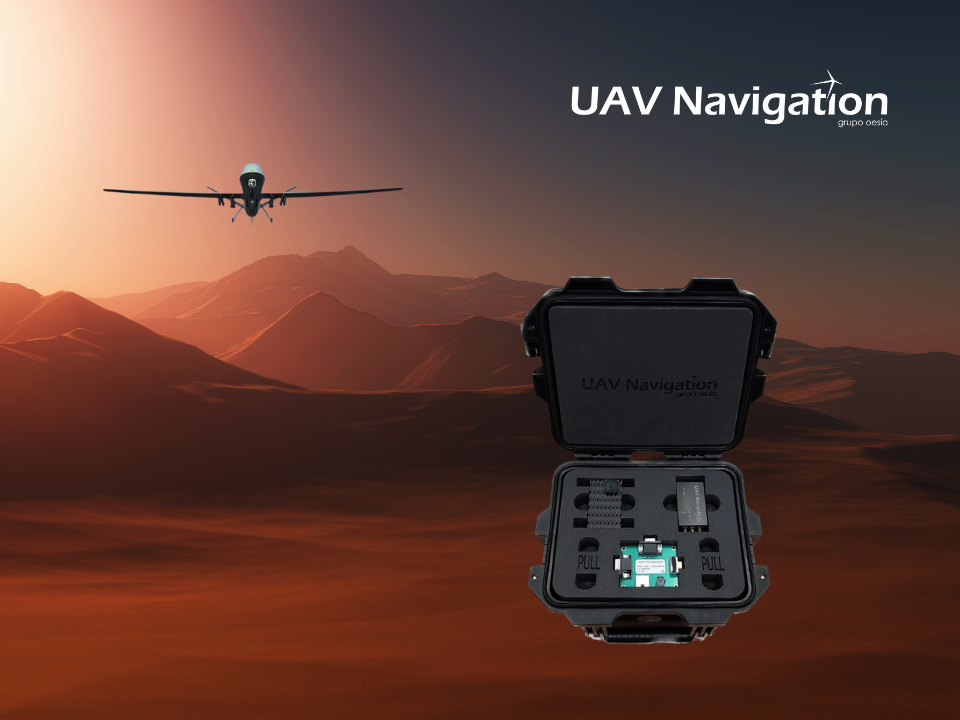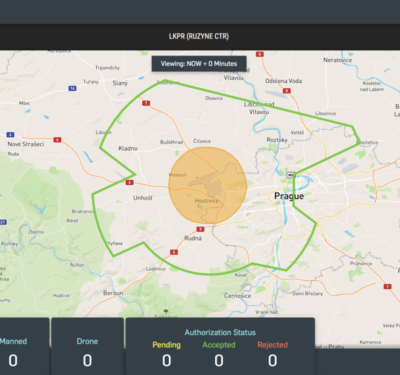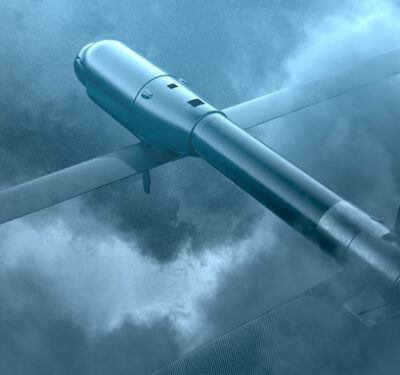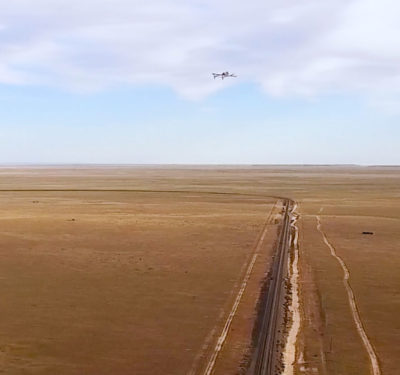Miguel Ángel de Frutos Carro is Director and CTO at UAV Navigation-Grupo Oesía, the Spanish company specialized in designing control solutions for unmanned aerial systems with over 20 years of continuous operation in the sector. He is an Aerospace Engineer whose main areas of interest are guidance, navigation, and control systems in unmanned systems, with a special focus on artificial intelligence applications to enhance autonomy and decision-making.

Integration of Advanced Technologies: How is UAV Navigation-Grupo Oesía integrating technologies such as AI and machine learning into their ISR drone systems to enhance autonomous operations and situational awareness?
A: UAV Navigation-Grupo Oesía is integrating advanced technologies such as artificial intelligence and machine learning into their ISR drone systems to enhance autonomous operations and situational awareness. Our comprehensive technological solution is based on artificial intelligence, developing autonomous systems capable of operating in contested environments without operator communication. These systems meet the requirements of complex missions and coordination between multiple units. A notable application is the use of intelligent vision for GNSS-denied navigation environments, as seen in our VNS (Visual Navigation System) product.
Regarding certification and operational safety, our autopilot system is an ‘expert system.’ This intelligent system does not rely on massive data sets but on decision-making laws designed and validated by engineers, ensuring deterministic behavior throughout the flight. Concerning ethical issues and decision-making about targets, we adopt a ‘human-centric approach.’ Our autonomy tools are designed to facilitate understanding and decision-making by a trained operator, enhancing their situational awareness and reducing their workload. This enables them to control more tools in a more comfortable and agile manner.

Security and Resilience: Given the increasing importance of secure and resilient navigation systems, how is UAV Navigation-Grupo Oesía addressing the challenges of GNSS jamming and spoofing in their ISR autopilot solutions for UAS?
A: As is well known, various sources can disrupt GNSS signals, including deliberate interference by adversaries, posing a threat to their reliability. Most UAS autopilots rely heavily on GNSS and MEMS inertial sensors to maintain precise position and velocity. UAV Navigation-Grupo Oesía’s design philosophy is that the UAV must continue the mission even without a GNSS signal.
The secret lies in the estimation algorithms that fuse multiple observables. UAV Navigation has excelled with its AHRS/INS based on inertial sensors, magnetometers, and air data, achieving navigation drift of less than 20m/min without GNSS. In current scenarios, greater precision is required. Therefore, we have developed new advanced sensors to significantly reduce this drift. Our standout Visual Navigation System can eliminate position drift in known areas or reduce it to less than 1% of the distance traveled in unknown areas. Soon, we will launch the first celestial navigator for small UAS and are developing radar-based navigation systems.
Customization and Scalability: What specific features and customization options does UAV Navigation-Grupo Oesía offer to cater to different ISR mission requirements, and how scalable are these solutions for diverse operational needs?
A: Our business model is based on offering advanced, robust, and reliable solutions to a broad portfolio of clients, leveraging 20 years of experience and investment in technology and innovation. Meeting the demand for different uses and applications is a challenge, so we have a product catalog designed to respond to various needs.
We offer a range of services that enable the integration of equipment, client training, and ensuring systems are operational quickly. Among these services, we provide engineering assistance to adapt solutions through the specific development of drivers or functionalities. Our GCS software is modular and configurable, allowing the interface to be customized to display information according to the client’s needs.
For clients with greater engineering capabilities, we offer tools to develop their own applications natively on our solutions. On the GCS side, we provide an SDK that allows full customization or easy integration with other applications. On the embedded side, through MCC interfaces or the MCC SDK, clients can develop embedded solutions that interact with the control computer during flight, offering different levels of integration, from total control to assisted control.

Environmental Adaptability: How are your autopilot ISR capabilities designed to perform in various environmental conditions, such as extreme weather or challenging terrains, and what innovations have been made to ensure reliability in these scenarios?
A: The use of unmanned systems is crucial in missions in ‘dirty, dangerous, and difficult’ environments, where replacing the crew is vital for their safety. In contexts such as defense or search and rescue missions, these platforms must operate in adverse conditions. Our system has been tested in real-world operations worldwide under various conditions, including contested environments without GNSS, maritime operations with saline and extreme humidity conditions, jungles, deserts, polar areas, and stratospheric platforms.
A key factor is the design and quality assurance of the hardware. Our system is certified according to MIL-STD 810 and MIL-STD 461 standards, ensuring correct performance under EMI and EMC. Additionally, we have facilities that simulate extreme conditions of humidity, temperature, vibrations, and electrical discharges.
Regarding software, we constantly research and develop new operational concepts that identify problems by combining information from cross-linked sensors and new adaptive control strategies. This allows the system to quickly adapt to changes, such as surface failures or reduced lift due to ice.
Future Developments and Innovations: Can you provide insight into the future developments and innovations UAV Navigation-Grupo Oesía is working on in the field of ISR technology, and what key trends do you anticipate will shape the industry in the coming years?
A: UAV Navigation-Grupo Oesía innovates to solve clients’ problems and enhance operational capabilities, always ensuring flight safety and efficient mission completion. The industry demands increasingly autonomous and robust systems for contested and complex environments.
This challenge requires hyperspecialization, with significant investment in talent and emerging technological capabilities to develop professional, advanced guidance, navigation, and control solutions that respond to the changing needs of real-world scenarios with agility and efficiency.
Major defense programs worldwide highlight the need to integrate unmanned and manned aircraft for joint and collaborative missions. Additionally, significant advances are being made in the concept of ‘low-cost attritable technologies,’ which allow for the deployment of large volumes of advanced unmanned systems that can efficiently cooperate to achieve mission objectives, while their economic value makes their loss acceptable.
UAV Navigation-Grupo Oesía is playing a prominent role by actively participating in several of these programs, developing next-generation solutions. Meanwhile, the company is manufacturing and delivering hundreds of flight control systems to its clients each month, offering affordable state-of-the-art GNC capabilities.






